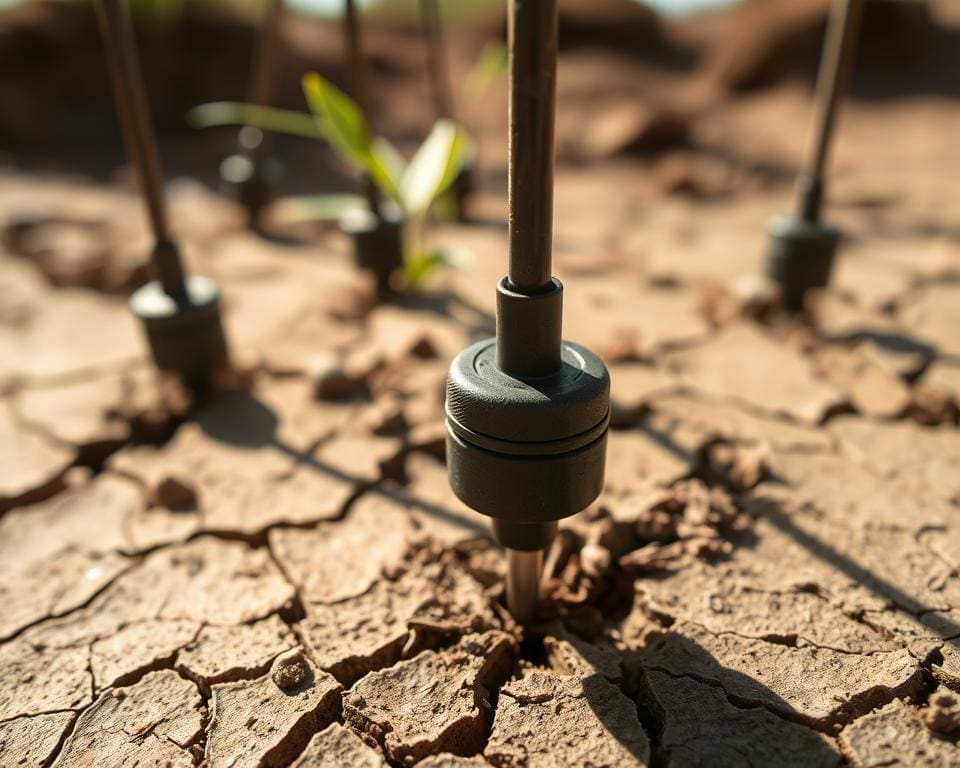Drought conditions are becoming increasingly prevalent in today’s climate, creating significant challenges for gardeners striving to maintain healthy plants. The need for effective monitoring solutions is paramount, and this is where garden sensors come into play. Utilising advanced moisture monitoring technology, these sensors are designed to detect drought conditions and provide vital information that can help gardeners make informed decisions about irrigation and plant care. By integrating these innovative tools into their gardening practices, enthusiasts can effectively manage water resources, preserve plant health, and ultimately contribute to sustainability efforts in a changing environment.
Understanding Garden Sensors and Their Role in Drought Detection
Garden sensors play a vital part in enhancing the practices of modern gardening. These devices enable gardeners to keep a close eye on soil conditions, ensuring that plants receive the necessary care for growth and sustainability. By employing various types of garden sensors, such as soil moisture sensors and weather stations, one can effectively monitor environmental factors and respond accordingly.
What Are Garden Sensors?
Garden sensors are sophisticated tools designed to provide real-time data about various environmental parameters. They primarily focus on monitoring soil moisture levels, temperature, and humidity, essential for maintaining healthy gardens. Different types of garden sensors include:
- Soil Moisture Sensors: These devices measure the amount of water in the soil, providing crucial information for optimal irrigation.
- Weather Stations: These sensors monitor climatic conditions, which can significantly impact plant health and water requirements.
- Light Sensors: These assess sunlight exposure, aiding in the placement of plants for maximum growth.
Each of these sensors contributes to drought detection by providing accurate readings of moisture levels and environmental conditions. Insights gained from these readings empower gardeners to make informed decisions regarding irrigation and plant care.
The Importance of Garden Sensors in Modern Gardening
The significance of garden sensors cannot be overstated in today’s gardening landscape. By facilitating effective monitoring of soil moisture, these devices optimise water usage, which is paramount during dry spells. Employing garden sensors promotes:
- Sustainable Practices: They help manage resources efficiently, essential in combating water shortages.
- Plant Health: Regular data collection leads to timely interventions, ensuring plants remain healthy and productive.
- Labour Efficiency: Automation through sensors reduces the need for constant manual checks, freeing time for other gardening tasks.
As the trends in modern gardening evolve, integrating these technologies enhances both efficiency and effectiveness. Garden sensors exemplify how innovation can support sustainable agriculture and responsible water management.

How do garden sensors detect drought conditions?
Garden sensors serve as a vital tool for gardeners aiming to manage hydration effectively, particularly in drought-prone areas. By employing clever techniques for monitoring soil moisture, these devices provide insightful data that can influence watering schedules and plant health. Understanding how garden sensors work reveals the nuances of effective drought detection and moisture management.
Soil Moisture Monitoring Techniques
Various soil moisture monitoring techniques exist to enable accurate detection of drought conditions. Capacitive sensors measure the dielectric constant of the soil, effectively gauging moisture levels without direct contact. Alternatively, resistive sensors evaluate conductivity changes in the soil, giving insights into moisture content. Both methods work in tandem to provide reliable readings, allowing gardeners to make informed decisions about irrigation.
Integrating Technology in Drought Detection
Integrating technology into garden systems elevates the capabilities of garden sensors. With the advent of the Internet of Things (IoT), real-time monitoring becomes possible, providing gardeners with instant updates on soil moisture levels. This advanced integration empowers individuals to detect drought conditions swiftly, ensuring that plants receive the necessary hydration at the right time. As technology continues to evolve, the precision and functionality of these garden sensors will only improve.
Sensing Technology for Drought in Precision Agriculture
Sensing technology plays a pivotal role in precision agriculture, particularly in addressing challenges related to drought. This approach allows farmers to utilise data and insights to enhance their drought management strategies. Understanding the various types of sensing technology can significantly improve resource utilisation and crop yields.
Types of Sensing Technology Utilised
Farmers today are leveraging several types of sensing technology for drought. Some key technologies include:
- Remote Sensing: This technology involves gathering data from satellites or drones to monitor crop health and soil moisture levels. Such information helps farmers make informed irrigation decisions.
- Soil Moisture Sensors: These sensors provide real-time data on soil conditions, enabling precise watering schedules and reducing water wastage.
- Weather Stations: Local weather data assists in predicting rainfall patterns, aiding in drought management by adjusting irrigation accordingly.
- Data Analytics Platforms: Advanced platforms compile and analyse data from various sources to offer actionable insights on resource management.
Case Studies on Precision Agriculture Success
Numerous case studies illustrate the successful implementation of sensing technology for drought across the agricultural sector. One notable example is a farm in East Anglia that adopted remote sensing techniques. The integration of this technology led to a 20% increase in crop yields while significantly reducing irrigation water usage.
Another case involves a vineyard in Kent that employed soil moisture sensors. This farm managed to optimise its irrigation practices, resulting in healthier vines and improved overall fruit quality during a particularly dry season.
Such success stories highlight the potential for employing similar methods in smaller-scale gardens, demonstrating how innovative approaches in precision agriculture can transform efforts in drought management, ensuring sustainability and productivity for the future.
Smart Irrigation Systems and Water Conservation in Gardens
Smart irrigation systems represent a remarkable advancement in the art and science of gardening, offering a solution that optimises water usage while promoting plant health. By employing moisture monitoring technology, these systems determine the precise needs of plants, ensuring they receive adequate water without excess wastage. Many gardeners appreciate the combination of innovation and sustainability that smart irrigation systems provide.
How Smart Irrigation Works
At the heart of smart irrigation systems lies their ability to monitor soil moisture levels in real-time. Sensors installed in the ground relay data to a central system, which analyses the information and adjusts watering schedules automatically. The advantage of this approach lies in its efficiency; it waters only when necessary, based on actual soil conditions, rather than relying on predetermined schedules. This method not only conserves water but ensures that plants receive the optimal moisture for growth.
The Benefits of Using Smart Irrigation Systems
Utilising smart irrigation systems enhances not just water conservation in gardens but also contributes to overall gardening success. Here are some of the key benefits:
- Significant reduction in water usage leads to lower utility bills.
- Healthier plants that thrive with precise moisture levels.
- Minimised risk of over-watering, which can lead to root rot and other plant diseases.
- Environmental sustainability, aligning gardening practices with conservation efforts.
- Remote access and control through mobile apps, increasing user convenience.
Environmental Sensors for Gardens: A Sustainable Approach
In an era where sustainable gardening is becoming increasingly essential, environmental sensors for gardens are emerging as pivotal tools for responsible horticulture. By not only monitoring soil moisture but also tracking temperature, humidity, and rainfall, these sensors provide invaluable data to gardeners. This information empowers them to make well-informed decisions, optimising plant health while conserving precious water resources.
Adopting a strategy of moisture monitoring through these advanced technologies significantly enhances drought detection capabilities. When environmental sensors can accurately gauge the various factors affecting plant growth, gardeners are better equipped to respond to changing weather conditions and ensure their gardens thrive even during dry spells. This proactive approach fosters a more resilient ecosystem and reduces the effects of drought on both plants and soil quality.
Looking ahead, the future of garden monitoring technologies promises even greater integration of smart sensors, enhancing the practice of sustainable gardening. As these technologies continue to evolve, we can anticipate a more insightful relationship between gardeners and their environment, promoting eco-friendly practices that benefit not only individual gardens but also the broader ecosystem. The journey towards sustainable gardening is brightened by the innovative potential of environmental sensors, leading us towards greener living.









